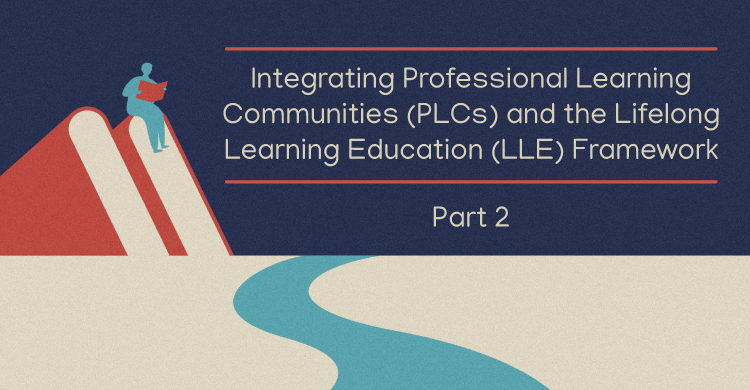“Who in this group will I be able to trust to walk the bad bush with me?” Sitting on the third row in the auditorium of my alma mater, this was the first question I fielded from my principal. I was a new teacher, and he was beginning his first day on campus. As the story goes, trusting him enough to “walk the bad bush” was the highest compliment one of his fellow Special Forces soldiers paid him during his tour in Vietnam. This statement meant your comrades quite literally trusted you with their lives because they found you to be driven for the cause, skilled, and loyal. It took many years for me to fully understand the implications of his parables. This story, in particular, was meant to convey his philosophy on leadership development.
I am often asked by campus principals and district leaders to identify the key to creating an effective PLC. While there is no single concept or magic bullet, I often share the story of the bad bush. My principal understood, with certainty, that education and learning was a matter of life and death for many of our students. Our students’ success would ultimately lead to their ability to thrive in a competitive job market and provide for themselves and their families. He also knew that developing leaders, specifically teacher leaders, within our ranks was the only way to ensure high learning for every student. The amount of time, energy, resources, and training invested in building and empowering teacher leaders is directly proportional to the growth and health of a PLC. If time is rarely made to collaborate with and supply growth opportunities to these critical few, we should not expect our organization to prosper. These trusted individuals are in the trenches and make a significant impact on the culture and progression of the school community.
When investing in leaders, first and foremost, a clear vision for student learning must be clearly communicated. Those who carry the torch must have a strong sense of purpose. As leaders of a district or campus, we are charged with inspiring and persuading those around us of the moral obligation to press on and continually improve as educators for the students we serve. This includes conveying relentless grit that persists in even the most difficult times because we are convinced our efforts may be what propel one more student to their dreams.
In my experience of helping prepare teacher leaders, the most critical concepts to learn are effective problem solving, building consensus, organization, facilitating collaboration, and implementing horizontal, mutual accountability. To be honest, no one was taught these concepts in Classroom Teacher 101. In fact, even the most high-functioning, veteran leaders at all levels struggle with one or more of these notions. After ensuring our mission and vision for students was clear, my principal empowered lead teachers to make critical decisions that impacted student learning. In the early stages, we sometimes struggled to build consensus through our collaborative teams. In one particular situation, a member of my team did not give his students the common formative assessment that had been developed collaboratively by our team. When I asked my principal for help, he could have directed this teacher to give the assessment, but this would have caused additional resistance and disdain for the cohesive team we were trying to create. Instead, he guided me through a discussion I would soon have with this teacher in which I explained the benefits of using common formative assessments to help more students learn. In each difficult situation I encountered as a leader, my principal offered guidance, support, and continued learning without stepping in to solve the issues for us. He allowed me to make mistakes as I grew into becoming a better teacher and leader. The fact remains that we all need ongoing collaboration with other professionals in the trenches to sharpen our skills. Creating a recurring and open dialogue about these topics including tips and potential pitfalls is essential.
As always, the best preparation is experienced while engaging in the challenge at hand. Didn’t we all learn exponentially more the first month of teaching than we did during our entire undergraduate experience? That is because we were active participants in the work and learned by doing. In the same way, empowering someone to lead a team and supporting that person with ongoing training through the challenges is the most effective way to train teacher leaders (DuFour & Marzano, 2011). In doing so, we must embrace the fact that mistakes will be made during the process and no one will lead quite like you would. The benefits far outweigh the missteps when a person is prepared to promote an outstanding school culture and foster the growth of a highly productive PLC.
Equal parts sage and soldier, my first principal’s words and methods still resonate with me today. His primary convictions were to inspire us to a cause greater than ourselves, prepare us for the challenges ahead, and empower us to lead without fear. As your journey as an educator continues, ask yourself: Am I seeking out and developing those whom I would trust to walk the bad bush with me?
Thank you, Bill Spivey, for your leadership, passion, and support.
Reference
DuFour, R., & Marzano, R. J. (2011). Leaders of learning: How district, school, and classroom leaders improve student achievement. Bloomington, IN: Solution Tree Press.
[author_bio id=”50″]






